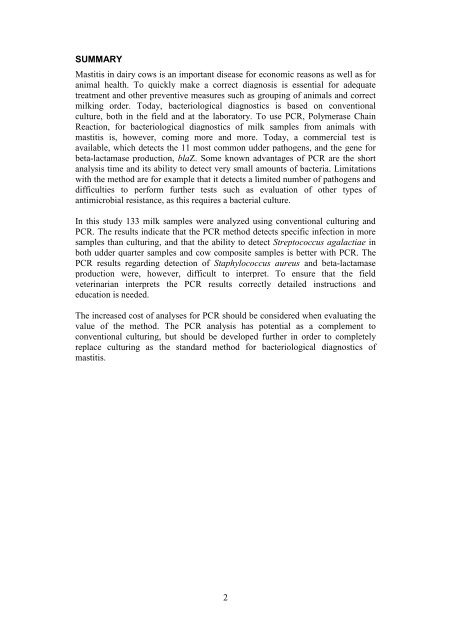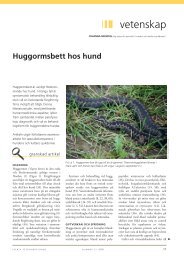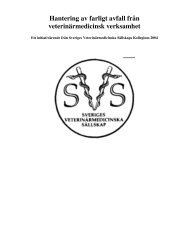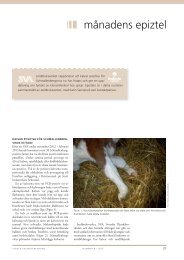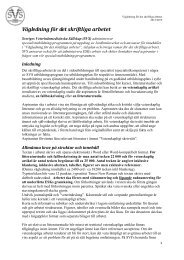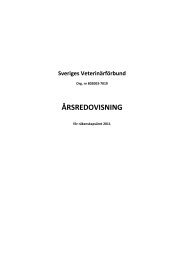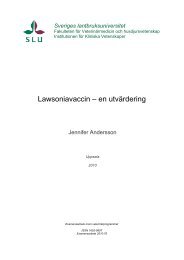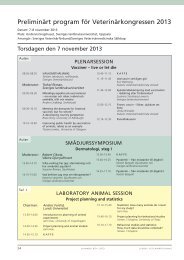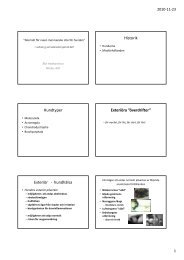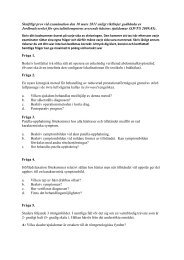och nackdelar med PCR vid bakteriologisk diagnostik av mastit hos ...
och nackdelar med PCR vid bakteriologisk diagnostik av mastit hos ...
och nackdelar med PCR vid bakteriologisk diagnostik av mastit hos ...
Create successful ePaper yourself
Turn your PDF publications into a flip-book with our unique Google optimized e-Paper software.
SUMMARY<br />
Mastitis in dairy cows is an important disease for economic reasons as well as for<br />
animal health. To quickly make a correct diagnosis is essential for adequate<br />
treatment and other preventive measures such as grouping of animals and correct<br />
milking order. Today, bacteriological diagnostics is based on conventional<br />
culture, both in the field and at the laboratory. To use <strong>PCR</strong>, Polymerase Chain<br />
Reaction, for bacteriological diagnostics of milk samples from animals with<br />
<strong>mastit</strong>is is, however, coming more and more. Today, a commercial test is<br />
<strong>av</strong>ailable, which detects the 11 most common udder pathogens, and the gene for<br />
beta-lactamase production, blaZ. Some known advantages of <strong>PCR</strong> are the short<br />
analysis time and its ability to detect very small amounts of bacteria. Limitations<br />
with the method are for example that it detects a limited number of pathogens and<br />
difficulties to perform further tests such as evaluation of other types of<br />
antimicrobial resistance, as this requires a bacterial culture.<br />
In this study 133 milk samples were analyzed using conventional culturing and<br />
<strong>PCR</strong>. The results indicate that the <strong>PCR</strong> method detects specific infection in more<br />
samples than culturing, and that the ability to detect Streptococcus agalactiae in<br />
both udder quarter samples and cow composite samples is better with <strong>PCR</strong>. The<br />
<strong>PCR</strong> results regarding detection of Staphylococcus aureus and beta-lactamase<br />
production were, however, difficult to interpret. To ensure that the field<br />
veterinarian interprets the <strong>PCR</strong> results correctly detailed instructions and<br />
education is needed.<br />
The increased cost of analyses for <strong>PCR</strong> should be considered when evaluating the<br />
value of the method. The <strong>PCR</strong> analysis has potential as a complement to<br />
conventional culturing, but should be developed further in order to completely<br />
replace culturing as the standard method for bacteriological diagnostics of<br />
<strong>mastit</strong>is.<br />
2


